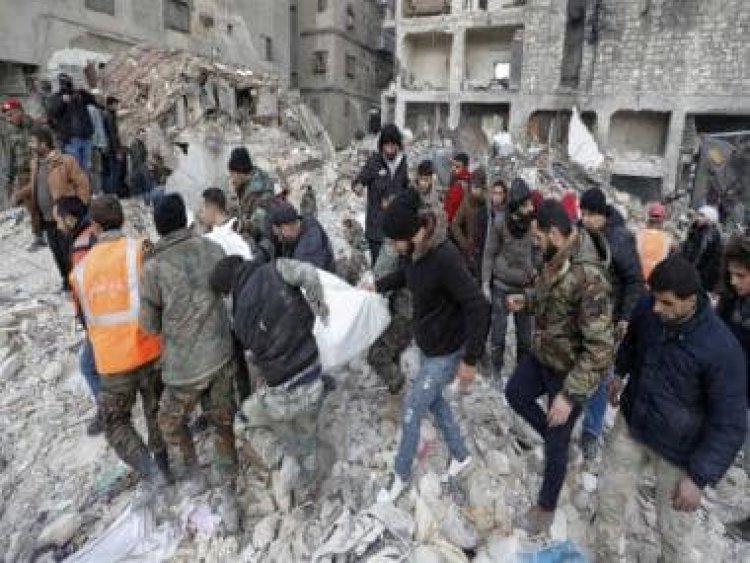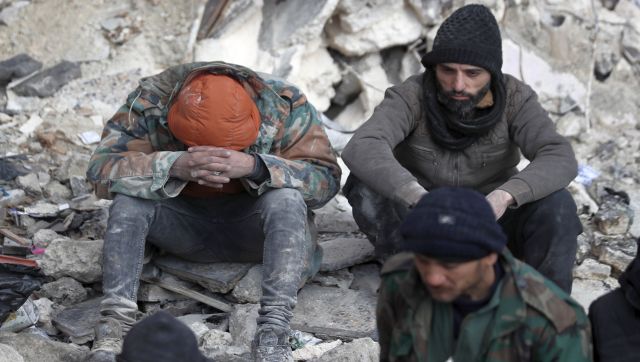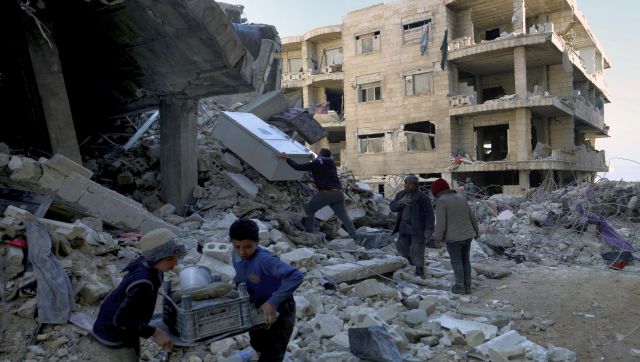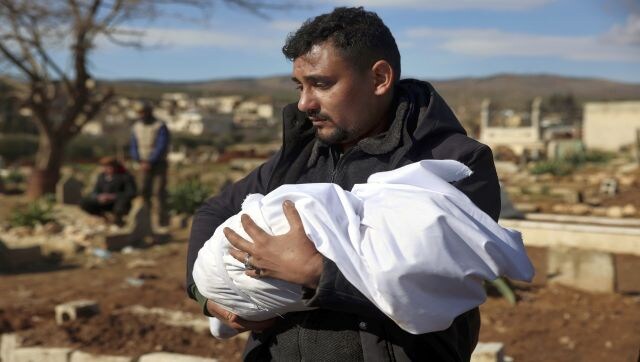Turkey, Syria earthquake: Why the situation in Syria is being called a ‘crisis within a crisis’
Turkey, Syria earthquake: Why the situation in Syria is being called a ‘crisis within a crisis’

“It’s a crisis within a crisis.”
That’s how El-Mostafa Benlamlih, UN resident and humanitarian coordinator in Syria, described the situation in Syria after the 7.8-strong magnitude earthquake struck the border areas of Turkey and Syria on Monday morning.
Since the quake struck while many people were sleeping, the death toll has risen to 7,926 with officials fearing it to rise only further as rescuers continue to dig the debris. Of this number, the number of fatalities in Syria is 1,220. The number of injured is 2,600. The Syrian Civil Defense, known as the White Helmets said these figures are expected to rise significantly due to the presence of hundreds of families under the rubble.
According to state news agency SANA, most of the casualties were in the northwest of the country, predominantly in the cities of Aleppo, Hama, Latakia and Tartus. These areas were already struggling to rebuild vital infrastructure heavily damaged by continual aerial bombardment during the country’s civil war, which the United Nations estimates to have claimed 300,000 lives since 2011.
“How can we tolerate all this?” Ibrahim al-Khatib, a resident of Taftanaz in northwestern Syria who was startled from his sleep early in the morning and rushed into the street along with his neighbours, was quoted as telling the New York Times.
Dr Osama Salloum, posted at a hospital in Idlib, also told New York Times, “We keep looking up to the sky for jets. My mind was playing tricks on me, telling me it was war again.”
And reverberating how bad the situation in Syria is, Mary Kaye, the spokesperson for the International Rescue Committee, said: “Anywhere else in the world, this would be an emergency. What we have in Syria is an emergency within an emergency.”
Here’s a better understanding of how the quake has only added to the woes of the war-ravaged country.
Ravaged by a civil war
Syria has been besieged by a civil war since 2011 when protesters, inspired by the success of the uprisings in the Middle East and North Africa, called for an end to the autocratic regime of Bashar Assad.
However, Assad unwilling to step down, launched the civil war that continues to date. His forces, with the help of Russia has retaken control of most parts of the country. But there are small pockets — like Idlib — that continue to remain under the Opposition’s control.
According to the United Nations human rights office, more than 300,000 civilians — that’s 1.5 per cent of the country’s population — have been killed in the war from March 2011 to March 2021. 
In early 2020 a ceasefire cooled most of the heated fighting, but military forces and armed groups are still active, with thousands of civilians dying each day due to the fighting.
The war has changed the landscape of Syria and altered the lives of people as they know it. Constant battles and jets launching aerial attacks have destroyed the country’s infrastructure. As per a 2018 report by the UN, the war had caused more than $120 billion in damage to roads, infrastructure and homes. A report by the World Bank in 2017 too painted a bleak picture: It stated that nearly a third of all homes in Aleppo and Idlib had been damaged or destroyed in the conflict.
Also read: Turkey, Syria earthquake: Thousands buried under rubble, how long can they survive?
The war has also led to Syria being the world’s largest refugee crisis. According to the UN refugee agency, more than 6.8 million Syrians have been forced to flee their country and another 6.9 have been internally displaced.
The civil war has left the country’s economy in tatters. Prices of food have skyrocketed and the destruction of infrastructure has only exacerbated the situation.
The situation is so bleak in Syria that last winter reports emerged that the people still living within the country were burning trash and pistachio shells just to keep warm and showering only once a week.
The country also reported a nationwide fuel shortage, which in turn, led to a power outage.
Lack of aid
Even before the earthquake struck Syria, the UN said that the number of people in need of humanitarian support was large — 70 per cent of the population required aid owing to the poor conditions in the war-ravaged country.
Last week, the World Food Programme warned that hunger rates in Syria were at their highest point since the war began; 2.9 million were at risk of sliding into hunger, while a further 12 million did not know where their next meal was coming from, the UN agency said.
Also read: ‘Miracle baby’ of Turkey-Syria Earthquake: Youngest survivor born under rubble
The UN estimates that 90 per cent of the 18 million in Syria are living in poverty, with the economy struck by conflict, drought, the COVID pandemic as well as the recent Cholera outbreak. 
The financial aid to Syria is not enough and with the earthquake wiping out the existing roads and infrastructure, the delivery of aid will only become tougher. “The infrastructure is damaged, the roads that we used to use for humanitarian work are damaged, we have to be creative in how to get to the people … but we are working hard,” UN resident coordinator, El-Mostafa Benlamlih, told the Reuters news agency.
Sending aid to Syria is also compounded by the issue of the country being held by warring groups. Syria’s envoy to the United Nations has insisted that all aid to the country should transit from inside Syria. However, there are fears that the aid won’t reach affected regions such as Idlib, which is currently outside government control.
Hospitals overcrowded, doctors missing
After the earthquake struck parts of Syria, rescuers were frantically searching for survivors trapped under the debris. Those rescued were being shifted to hospitals. However, hospitals were struggling with the caseload. 
Dr Osama Sallom, of the Syrian American Medical Society (SAMS) told SkyNews that there is a “huge lack of staff and equipment” at the hospital and all the wards were occupied by patients, mainly women and children. “All our beds are full — people are having to lie on the ground. After a few hours we will have no space left on the ground,” he said, adding, “It’s reminiscent of a warzone – it’s giving many people traumatic memories.”
The country’s medical infrastructure has been battered owing to the war. There is an acute shortage of doctors and hospitals since the war broke out. Moreover, medical personnel struggle with the lack of equipment and basic necessities such as clean water. Hospitals are also suffering from power outages.
The earthquake adds to the growing list of catastrophes in Syria. Jomah Al Qassim, a Syrian aid worker rightly said, “This is the last thing people need in Syria.”
With inputs from agencies
Read all the Latest News, Trending News, Cricket News, Bollywood News,
India News and Entertainment News here. Follow us on Facebook, Twitter and Instagram.
What's Your Reaction?



























































